What Goes Up…Explodes!
Fireworks displays are often hand-fired, Joe Collins’ favorite way of shooting a show. And, this past weekend, he and a friend photographed a hand-fired show from beginning to end. Here’s what he had to say about the experience.
Loaded Trailer
Above, is a trailer loaded out for the show with racks, mortars, buckets, post-hole digger, fire extinguishers and other things needed.
Dropped Show
The show is “Dropped”—delivered by a special crew with the proper training, equipment, placards, trucks and certifications.
Mortars
The mortars are dug in. Fours are in front, fives are in the middle and threes are at the end. This placement reduces the chances of loading the wrong sized shell into a mortar.
Dropping Finales
Finale racks are screwed together, and the shells are dropped. Finales are long chains of shells tied together with quickmatch so that when one shell is lit, the entire rack will fire in sequence.
Finale Racks
Above, you can see all the finale racks ready to be shot.
Bucket of 5s
The shells to be shot individually are put into buckets—basically a garbage can. With the lid turned upside down this provides some protection for the shells before they are loaded. Each size of shell has its own bucket. The person responsible for getting the shells out for the loader is called a “Bucket Tender.”
Cakes
The cakes are set up. A cake is a multi-part firework. Each cardboard tube contains a shell or effect and all are lit off in sequence once the fuse is lit.
The next step is to wait for it to get dark. Bring bug spray, lawn chairs and plenty of water to drink!
Fusee Closeup
Something very much like a road flare—called a “Fusee” is fastened to the end of a piece of conduit. To light a shell, touch the burning end of the Fusee to the quickmatch or visco, make sure it is lit and briskly step away.
Lighting Shells
The bucket tender is to the left. And the shooter is lighting quickmatch which will light the shell.
Lifting Shell
To the loaders and bucket tenders, this is what a shell looks like as it’s lifting. In this case, it’s a five-inch shell.
I like to tell people I haven’t seen a fireworks show since I started shooting them because what you see above is pretty much all that I get to see.
Shell Hand-off
The loader is getting more shells from the bucket tender to be loaded into mortars. Note the fusee in the back pocket of the loader—in this case me. The extra fusee is a backup if something goes wrong with the one being used to light shells.
Loading Shells
Yes, we are often that close to lifting shells as we are loading. Although it looks as though I have my head over the mortar, I’m trying to be as far away from the mortar as I can, facing another direction as I drop the shell.
A lot of teamwork, training, experience and most importantly, trust is involved in shooting a fireworks show.
Stepping Fast
And everyone has to hustle, while being safe.
Cakes Lifting
Every once in a while, hit a cake or two. Yes, it does sometimes get a bit bright.
When the bucket tenders are out of shells, they turn their bucket over to let everyone know that they have no more shells. Then they can watch the end of the show.
Finale Lifting
Naturally, the last thing fired are the finale’s. I was about three-foot away from the racks when the shells started lifting.
Safety Check
When the show is done, every mortar and cake is checked to see if all the shells have fired. If a shell hasn’t lifted for some reason, the mortar is filled with water and it’s removed to go back to the fireworks company to see what went wrong.
Oops
Above, you can see where we blew the top off a five-inch mortar. It landed two-feet from a bucket tender’s head.
Then the hard work starts, tearing down everything and packing it away for the trip back to the fireworks bunker.
The job of a pyrotechnician is physically demanding, sometimes dangerous, doesn’t pay very well, and requires a lot of planning, training and experience to pull off, but the result is worth it!
* Joe Collins is a twelve-year veteran firefighter/paramedic in the busiest volunteer fire department in his county. He holds numerous fire and EMS certifications—many of the same as professional firefighters. During the day he works as a Critical Care Paramedic in the highest call volume EMS service in Iowa. For the past seven years, he has been a professional pyrotechnican working in the fireworks display industry.





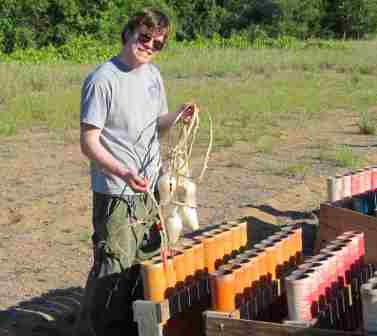
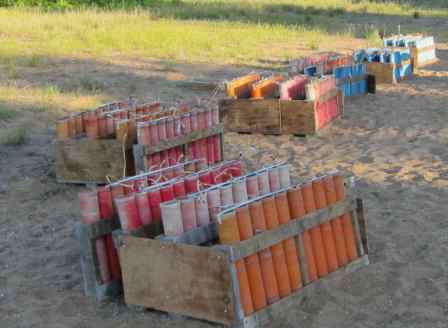
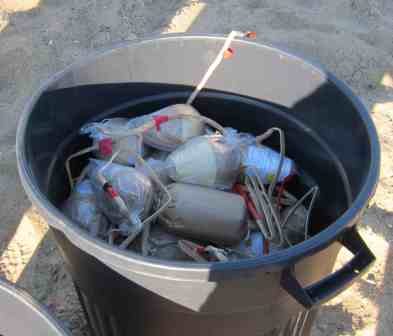
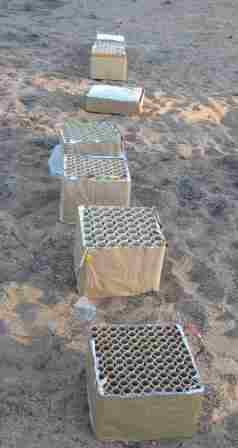

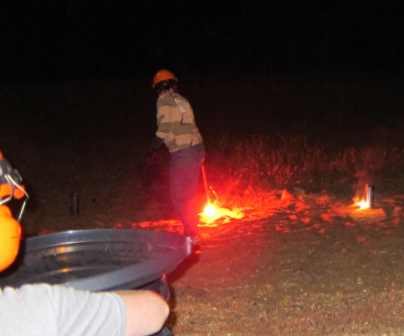
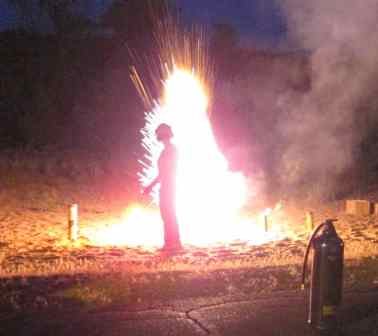
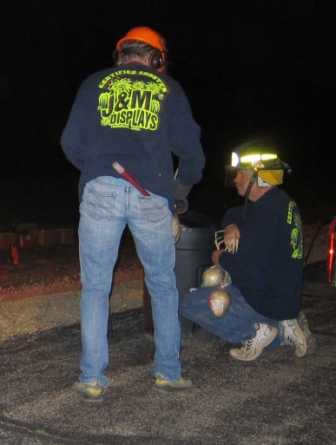
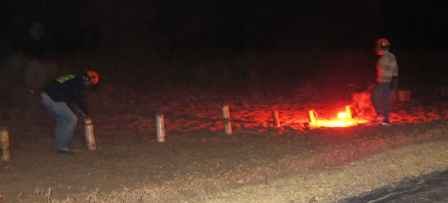
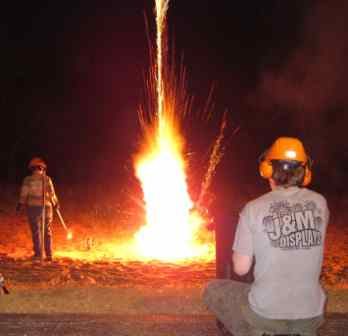
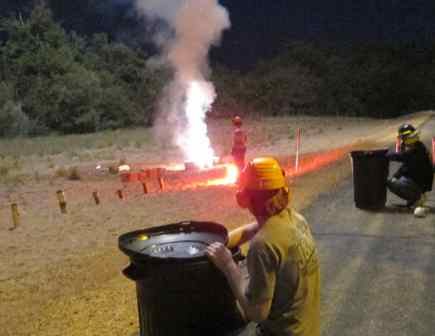
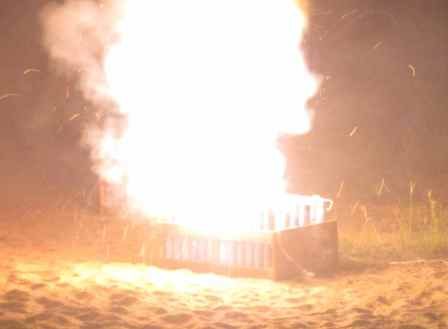

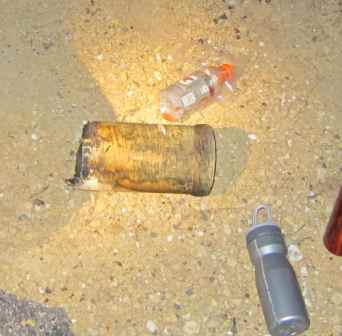




Don’t try this home.